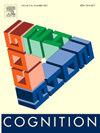Learning to be confident: How agents learn confidence based on prediction errors
IF 2.8
1区 心理学
Q1 PSYCHOLOGY, EXPERIMENTAL
引用次数: 0
Abstract
Decision confidence should normatively reflect the posterior probability of making a correct choice, conditional on relevant information. However, how individuals learn to calibrate their sense of confidence to that probability remains unknown. The standard approach to estimate any quantity is to use trial-by trial samples of that quantity to train a function approximator (such as a neural network) based on the prediction errors (quantity minus prediction of the quantity). We tested whether humans learn about confidence using this principle in a perceptual decision-making experiment where participants repeatedly alternated between two manipulated feedback regimes (negative vs positive) every few blocks of trials. As anticipated, confidence ratings tracked feedback, with confidence gradually increasing when participants received overall positive feedback (and thus positive prediction errors), and decreasing when receiving negative feedback (and thus negative prediction errors). These feedback-induced dynamic changes were specific to confidence, as objective performance was unaffected by the manipulation. We propose a single-layer neural network model for confidence which updates the computation of confidence based on trial-level prediction errors, and demonstrate that it better fits the behavioral data compared to a purely valence-based model. Taken together, these results show that the computation of confidence is dynamic: humans constantly update how they compute confidence based on prediction errors (feedback minus prediction), in a statistically efficient manner.
学习自信:智能体如何根据预测错误学习自信。
决策置信度应以相关信息为条件,规范地反映做出正确选择的后验概率。然而,人们如何学会根据这种可能性来调整自己的自信感,仍然是未知的。估计任何数量的标准方法是使用该数量的反复试验样本来训练基于预测误差(数量减去数量的预测)的函数逼近器(例如神经网络)。我们在一个感知决策实验中测试了人类是否使用这一原则来学习自信,在这个实验中,参与者每隔几个区块就在两种被操纵的反馈机制(消极和积极)之间反复交替。正如预期的那样,信心评级跟踪反馈,当参与者得到总体的积极反馈(从而产生积极的预测误差)时,信心逐渐增加,当收到消极反馈(从而产生消极的预测误差)时,信心逐渐减少。这些反馈诱导的动态变化是特定于信心的,因为客观表现不受操纵的影响。我们提出了一种单层神经网络置信度模型,该模型更新了基于试验级预测误差的置信度计算,并证明与纯基于值的模型相比,它能更好地拟合行为数据。综上所述,这些结果表明置信度的计算是动态的:人类以统计上有效的方式不断更新他们基于预测误差(反馈减去预测)计算置信度的方式。
本文章由计算机程序翻译,如有差异,请以英文原文为准。
求助全文
约1分钟内获得全文
求助全文
来源期刊

Cognition
PSYCHOLOGY, EXPERIMENTAL-
CiteScore
6.40
自引率
5.90%
发文量
283
期刊介绍:
Cognition is an international journal that publishes theoretical and experimental papers on the study of the mind. It covers a wide variety of subjects concerning all the different aspects of cognition, ranging from biological and experimental studies to formal analysis. Contributions from the fields of psychology, neuroscience, linguistics, computer science, mathematics, ethology and philosophy are welcome in this journal provided that they have some bearing on the functioning of the mind. In addition, the journal serves as a forum for discussion of social and political aspects of cognitive science.
 求助内容:
求助内容: 应助结果提醒方式:
应助结果提醒方式:


